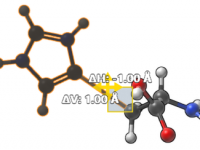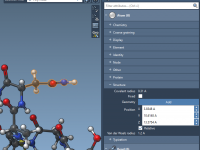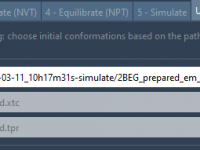Author: OneAngstrom
How to Orbit Around Molecules More Effectively in SAMSON
Quickly Edit Molecular Properties with the Inspector in SAMSON
Setting Up Umbrella Sampling Projects From GROMACS Trajectories
Making Atoms Appear Progressively in Molecular Animations
When Structure Files Become Headaches: How SAMSON Helps You Parse What Matters
A Clearer View: Using Visual Models in SAMSON to Understand Nanosystems
Making Molecular Models Breathe with the Pulse Animation
Quick On, Quick Off: Using the Flash Animation for Clean Molecular Visibility Transitions

Creating engaging molecular animations is often essential when preparing scientific presentations, tutorials, or visualizations for molecular modeling projects. One recurring challenge is how to briefly yet clearly showcase the appearance and disappearance of molecular components—without overwhelming the viewer with effects…












